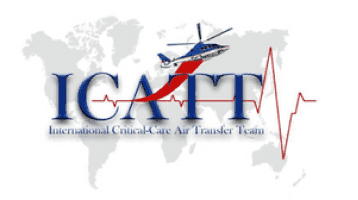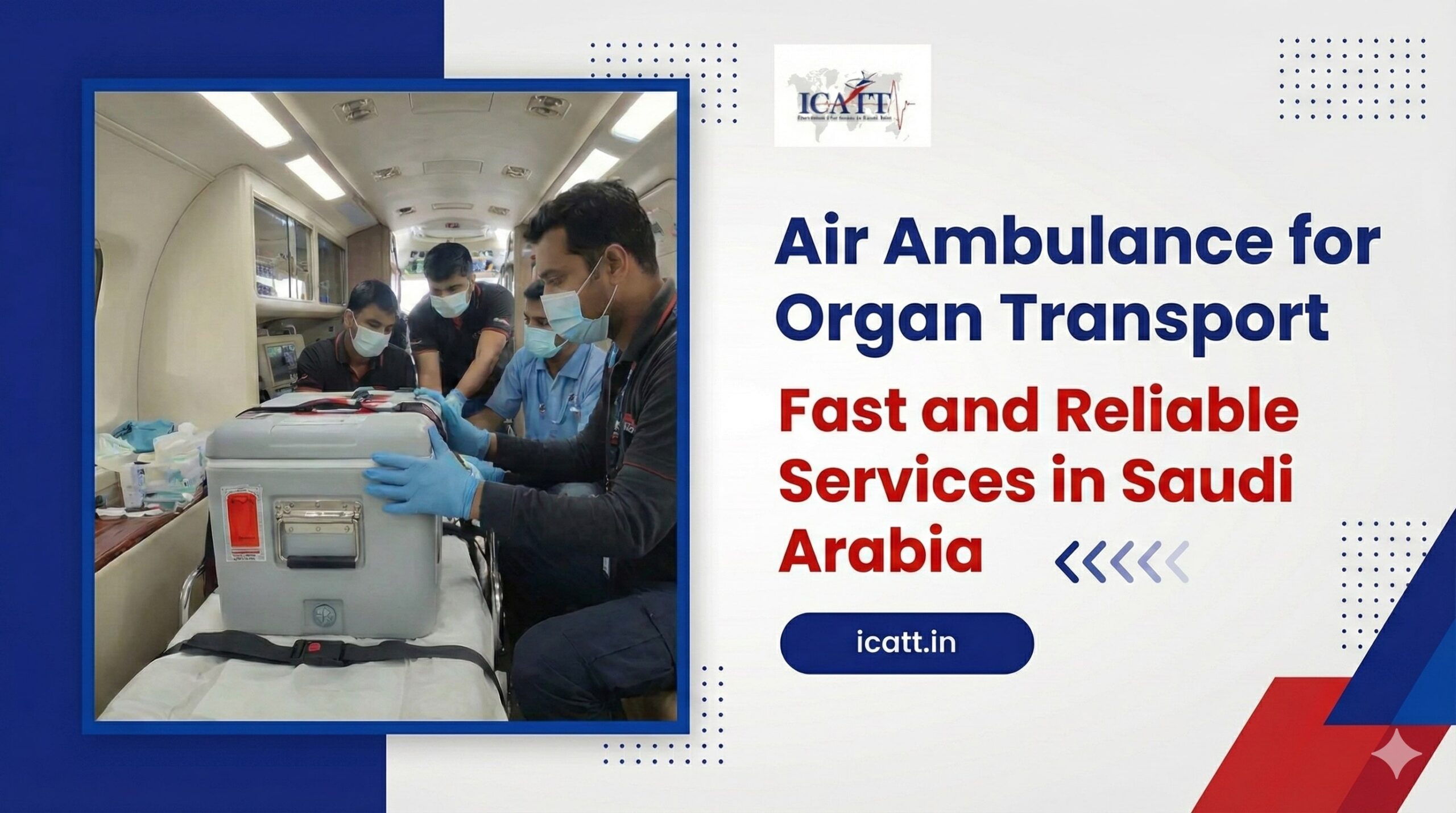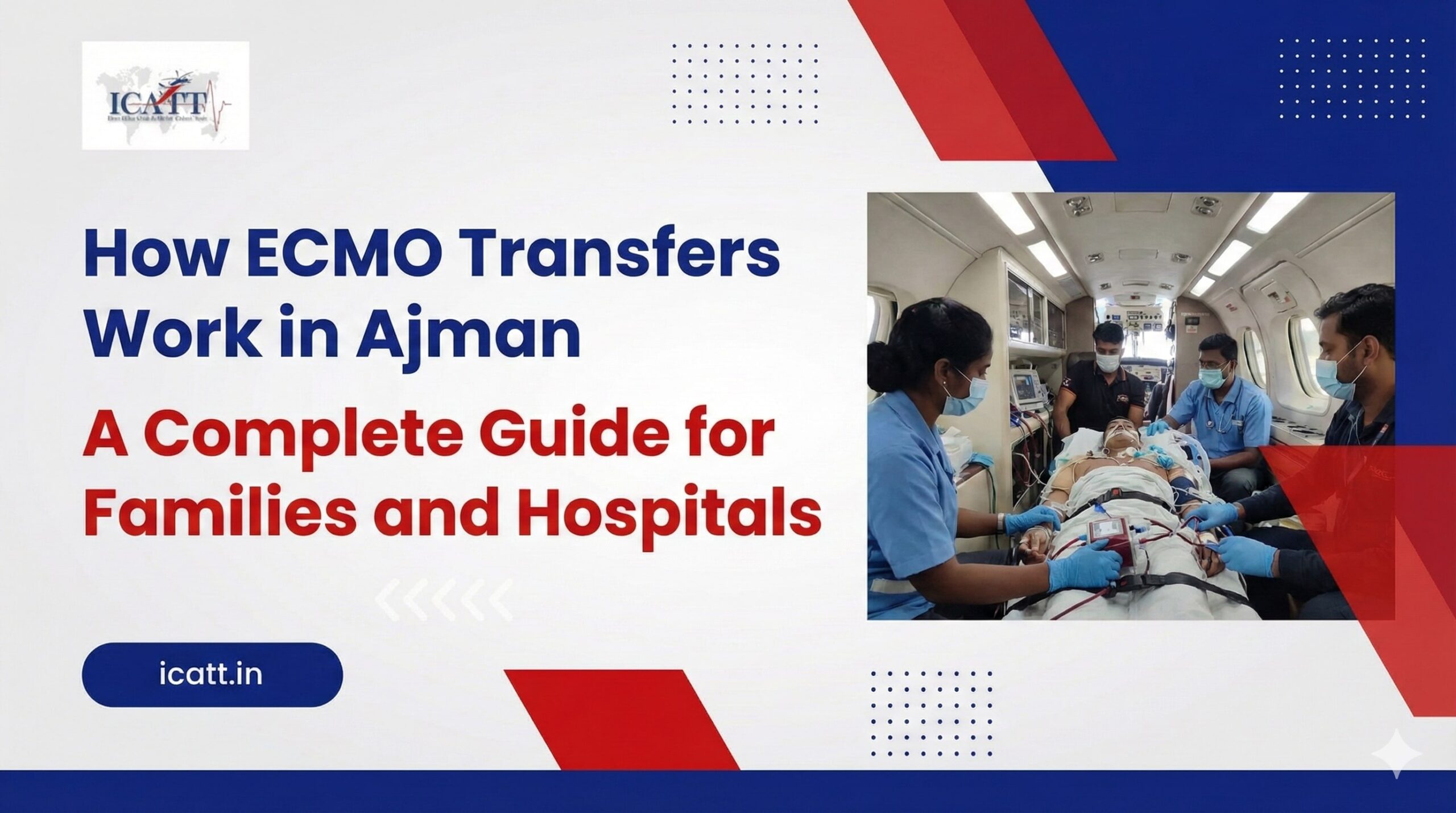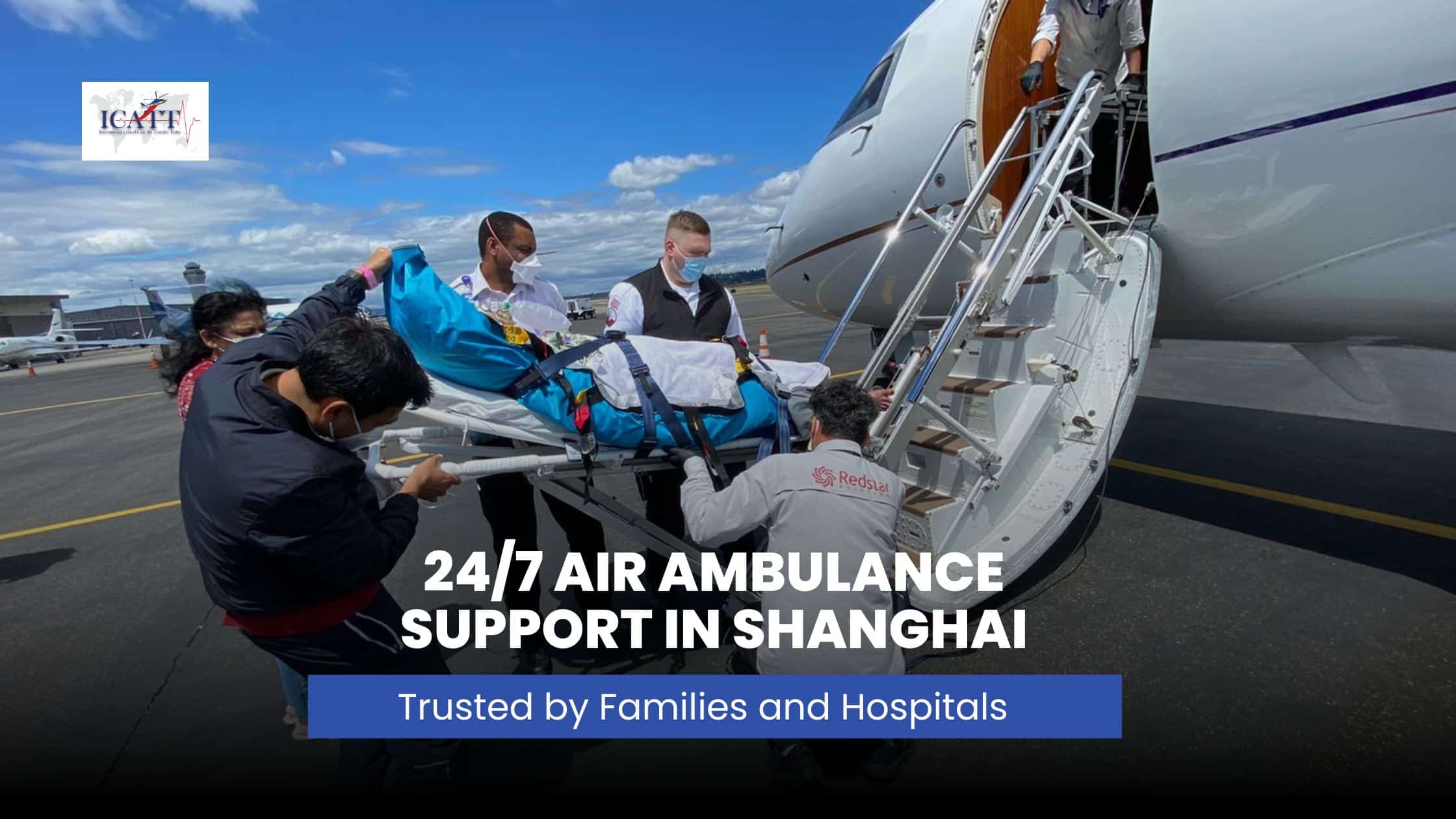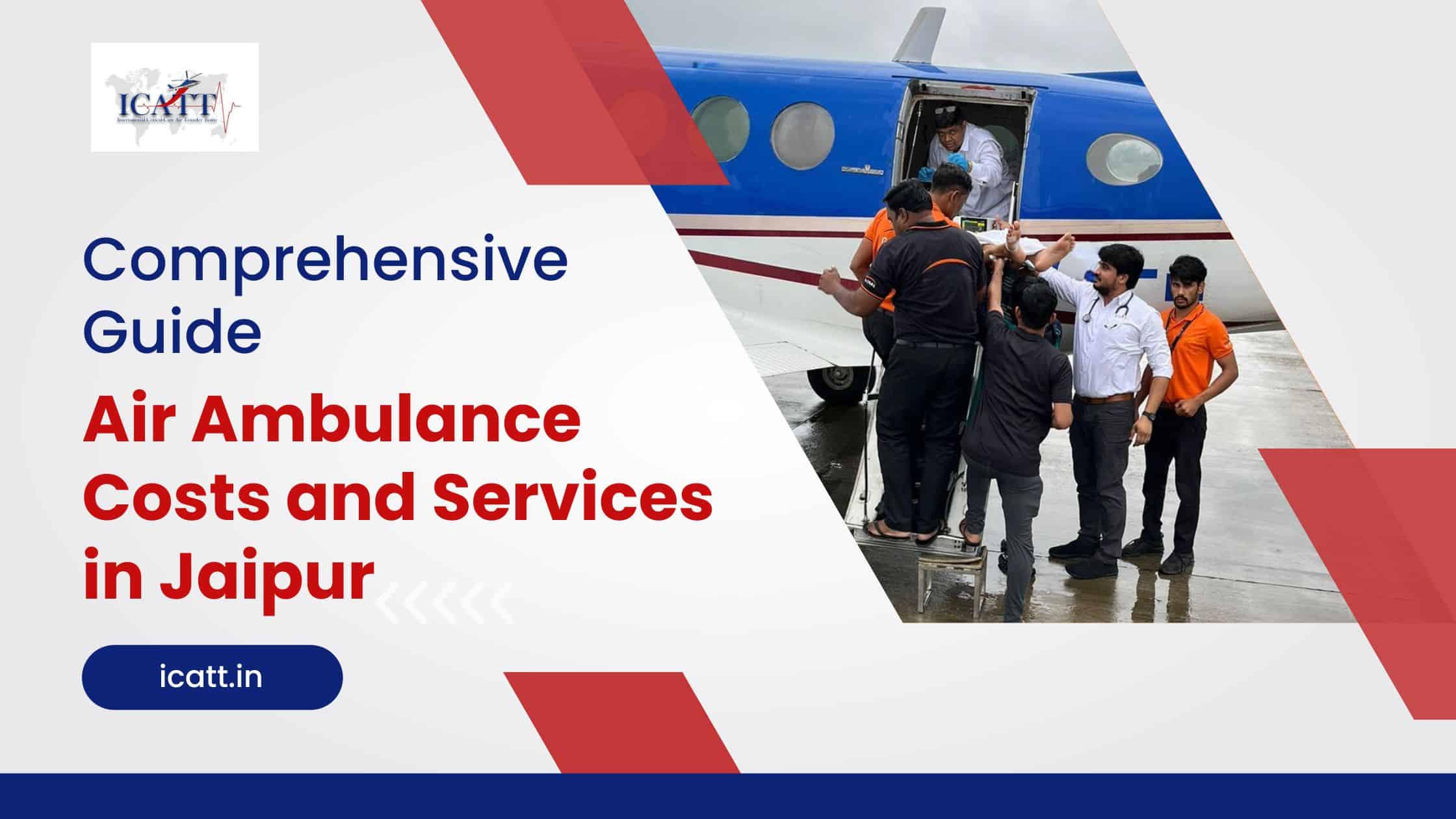An Air ambulance from Canada to India bridges the geographical gap between these two nations to ensure timely medical assistance. During these critical moments, air ambulance services step in as a lifesaver. When conventional travel routes face a lot of disruption, an international air ambulance can swiftly transport patients from one location to another. Even during the most periodic tensions or stringent regulations, ICATT facilitates seamless patient airlift services, coordinating with medical facilities at both ends. In this blog, we will explore the international regulations governing operations of air ambulance in India.
Understanding International Air Ambulance Services
Typically, a fixed-wing air ambulance from Canada to India takes approximately 14 to 16 hours, depending on the specific route and any necessary layovers. However, the process of arranging an air ambulance service from Canada to Chandigarh involves meticulous documentation, obtaining permissions, and adhering to strict regulations. ICATT Air Ambulance Services boasts a dedicated team proficient in planning every aspect of the operation seamlessly, from the initial bed patient stabilisation to the final transfer to the medical facility in India.
Key Aspects of International Air Ambulance Regulations
For air ambulance from Canada to India, let’s take a look at the regulations of both countries in detail.
Canadian Regulations
In Canada, international air ambulance services are stringently regulated to ensure patient safety and quality of care. Here are some key considerations:
- Licensing and Certification: In Canada, air ambulance services must be licensed by Transport Canada, ensuring adherence to stringent safety standards and operational requirements. Additionally, it is crucial to verify that the team on board is a specially trained team that can ensure the highest level of safety. The ICATT Air Ambulance Services has internationally trained doctors and paramedics who are very efficient and follow international levels of protocols during patient airlift.
- Documentation: Canadian regulations mandate comprehensive documentation for air ambulance service from Canada to Chandigarh. This includes medical records, treatment plans, and clearance from the patient’s attending physician. At the airport, passengers must present valid identification, such as a passport, and any necessary travel documents, including visas or permits for entry into the destination country. ICATT Air Ambulance Services has an operation team taking care of all necessary paperwork and documentation, ensuring a stress-free experience for patients and their families.
- Patient Stability: Prior to onboarding a fixed-wing air ambulance, the medical team must thoroughly assess the patient’s stability for long-distance air travel. This involves meticulous monitoring of vital signs, oxygen levels, and overall medical condition to ensure that the journey will not pose undue risk to the patient’s health.
- Insurance Coordination: In Canada, patients often rely on private health insurance or provincial health plans to cover the costs. However, many emergency medical insurance policies issued in Canada include international air ambulance. It’s important to understand what these benefits do and don’t cover with key terms and conditions that apply.
- Permits and Clearances: Transport Canada grants permissions for air ambulance Canada to India, overseeing safety and regulatory compliance. Additionally, air ambulance operators must obtain overflight permits from countries the aircraft will pass over and secure landing permissions in the destination country. ICATT Air Ambulance Services has a vast aviation network globally that ensures timely approvals and clearances. We also proactively take permission from relevant authorities beforehand, minimising delays and ensuring seamless operations.
Indian Regulations
We also have specific regulations and protocols when it comes to air ambulance in India. Here are key factors to consider:
- Landing Permissions: For international air ambulance services, one must obtain landing permissions from the Directorate General of Civil Aviation (DGCA) in India. This requires submitting a detailed flight plan outlining the route, schedule, and purpose of the flight. The DGCA carefully evaluates each request to ensure compliance with safety standards and airspace regulations. ICATT Air ambulance services make sure to take landing permission prior, hence there’s no delay in the journey.
- Medical Clearance: Indian authorities require a medical clearance certificate, which includes the patient’s medical history, current health status, and approval from a licensed physician. Additionally, the patient and their family must have all the proofs and documents necessary for treatment in Indian hospitals. Our team at ICATT Air Ambulance Services will coordinate all the documents required. Our highly trained aeromedical team will take care of patients’ conditions all the way.
- Customs and Immigration: The air ambulance in India must comply with Indian customs and immigration regulations upon arrival. This involves presenting all necessary documentation for both the patient and the accompanying medical team, including passports, visas, and any relevant permits. Customs clearance procedures are expedited to minimise delays and facilitate seamless entry into the country.
- Coordination with Local Healthcare Facilities: It is essential to arrange for the patient’s admission to a healthcare facility in India upon arrival. Coordination with the receiving hospital ensures a smooth transition to the hospital and optimal patient outcomes. ICATT Air Ambulance Services collaboratively works with treating hospitals and ground transportation teams to ensure a quick journey to recovery.
The Journey: Canada to India
The journey of air ambulance service from Canada to Chandigarh involves meticulous planning and coordination. Here is a step-by-step overview of the process:
- The process begins with a comprehensive assessment of the patient’s medical condition.
- The air ambulance provider plans the flight route, obtains overflight and landing permits, and coordinates with aviation authorities
- The medical team, comprising specially trained and certified aeromedical staff and paramedics, prepares the necessary medical equipment.
- On the day, the patient is transferred from the hospital to an air ambulance like a fixed-wing air ambulance or commercial stretcher.
- During the flight, the medical team provides continuous care, and constant communication is maintained.
- Upon landing in India, the patient is transferred to the receiving hospital using specialised ground transportation to the destined hospital.
While it might seem daunting at first, an international air ambulance provider will make it easy for you. ICATT Air Ambulance Services understands the urgency and complexity of each patient’s medical condition. Our team meticulously plans every aspect of the journey, from securing necessary permits to coordinating with medical facilities on both ends. Equipped with state-of-the-art medical equipment and staffed by highly trained medical experts, we ensure that patients receive the highest standard of care during air ambulance from Canada to India.
